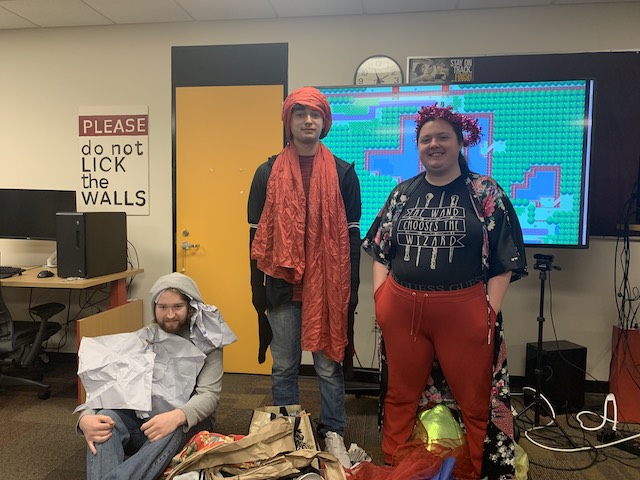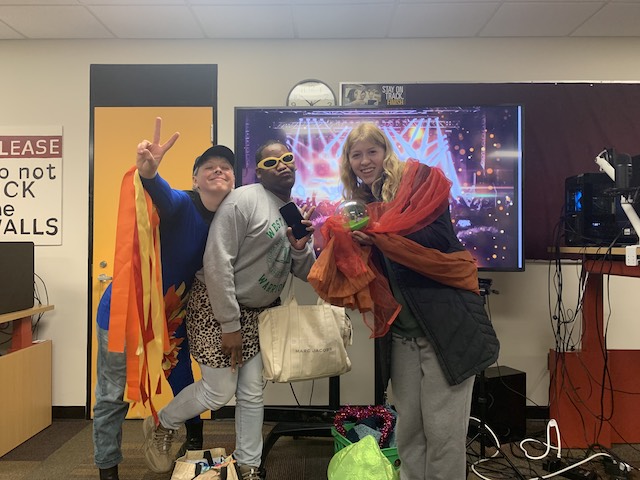Study Hall Book Club: Rafael Frumkin Discusses Bugsy & Other Stories

Novelist and Study Hall subscriber Rafael Frumkin wrote his new short story collection Bugsy & Other Stories in a “flurry of creative activity” during the onset of COVID-19. The collection hopscotches around the zeitgeist, featuring a deeply modern set of characters united by a desperate search for belonging. The titular “Bugsy” is about a queer college dropout with bipolar disorder who becomes infatuated with a community of BDSM porn stars. In “Like and Subscribe,” an e-girl confronts the limitations of control after being stalked by an obsessive fan, while “On The Inside” portrays a mother falling down an anti-vax rabbit hole due to the pressure she feels to help her autistic child by any means necessary. Frumkin works through contentious contemporary topics—sex work, mental health, the loneliness of digital life—with compassion for all parties.
The collection follows Confidence and his 2018 debut novel, The Comedown, which is being adapted as a Starz series, featuring Regina King and Freddie Highmore. In addition to writing fiction, he is a creative writing professor at Southern Illinois University and publishes a Substack newsletter. Ahead of the release of Bugsy & Other Stories, I spoke to Frumkin about parasocial relationships, the challenges of portraying neurodivergence, and his unique extra credit opportunity for students.
This interview has been edited and condensed for clarity.
Two stories in the book, “Like and Subscribe” and “Bugsy,” grapple with parasocial relationships. Why are you drawn to this dynamic?
The influencer Belle Delphine is the inspiration for “Like and Subscribe.” [She is] this e-girl who makes million dollars a month off her OnlyFans and has leveraged the parasocial dynamic to her advantage in amazing ways. Conventional fame is interesting, but I’m especially interested in parasocial micro-celebrities where the average Gen X or boomer uncle probably hasn’t heard of. You have to be fairly online to know who these folks are.
The parasocial [is] something we do to cope with the dehumanizing structure of the [digital] world and the social isolation of the analog world. Belle Delphine is someone on whom we freely project various ideas about gender and femininity. I’m [currently] writing an essay about her comparing her to Marina Abramović. I really think Delphine has a lot in common with Marina because she makes herself available in a controlled way. She makes herself available in a way that Taylor Swift and Beyoncé and Harry don’t.
In the case of Bugsy, they are someone who finds community through parasocial means. [The character] Vanessa gives them the flash drive and they watch those [pornographic] videos, but the difference with Bugsy versus the standard parasocial situation is that they get inducted into that world. The world of that imagination becomes their reality. In “Like and Subscribe,” it sort of happens with Garrett [the e-girl’s fan] but he’s just a stalker.
That was the interesting philosophical experiment I was playing with Bugsy, like, okay: you have this obsession, these ideations, and you’re making up these narratives about this group of people who are narrowly accessible to you in this online venue. What happens when they are rendered before you in the flesh? It’s an interesting experiment and I like how it plays out. [Bugsy] ends up learning a thing or two of stepping out of the parasocial and being ready to be in the world.
I found “On The Inside” to be the most poignant story in the collection. It’s about Benny, a boy whose anti-vax parents try to treat his Autism Spectrum Disorder with chelation therapy, a dangerous and scientifically unproven practice that involves potent medications typically used to remove heavy metals from the body. There’s a disclaimer before that story, explaining how, as a neurodivergent person, your goal with this story was to “expose the harmful practices that impact the autistic community” but that the “story is in no way intended to speak for nonverbal autistic people.” Can you elaborate on the thought process behind that author’s note?
As I was writing this story, I was coming to terms with my own Autism Spectrum Disorder and how my own neurodivergence manifested in me. Many marginalized folks are reasonably [asking authors], “Hey, please don’t co-opt the story of marginalization for purposes of your own career advancement, just to demonstrate what you can do.” It’s a reaction to the cis white dude impersonating someone and punching down. It’s a totally understandable ask. I was fearful because I [didn’t want to state], “I’m autistic, I can write this story.” That feels like asking for a certain degree of recrimination and sort of anticipating antagonism.
The way autism and neurodivergence manifest can look super different. I have worked with folks who are on the spectrum. One of the facets of the artistic experience that I was wrestling with was co-opting, was being nonverbal. I was dancing this very fearful dance, where I was like, “I should say something but I also shouldn’t anticipate antagonism. But I should address the fact that I’m very aware of what’s going on.” So I came up with that author’s note. Would I do it again? No. Not because I think it’s a horrible mistake, just because [it] ultimately adds up to the same set of pieties that I was trying to avoid in the first place.
I think there’s another side of the coin to saying, “you need to demonstrate you have the cred and life experiences to write from that perspective” that [promotes this idea that] any attempt to write across experience, if that experience could in any way be interpreted as somehow more marginalized than your own, is punching down. To me, that is characteristic of the deep lack of nuance in online discourse. I was trying to please a crowd that cannot be pleased.
Another interesting aspect to “On The Inside” is that it’s from the perspective of both a child, and a mother who joins an online anti-vax community. As a fiction writer, I’m sure you’re well aware of the risks of and difference between humanizing and rationalizing bad behavior. What was the experience like of giving subjectivity to this type of parent who is harming their child?
It’s pretty clear from the first section [of the short story] that the mom is under the thumb of her husband who wants normalcy at all costs. He is watching her because he wants his family to look a certain way. He is the successful hedge fund manager who is so embarrassed that his son is this nonverbal kid who he thinks is feral. [He utters] all of this very harmful abeliest bullshit sayings like, “I know there’s a normal kid in there.” The gendered standards [around parenting] are outrageous. If the kids are in any way disruptive in the middle class panopticon, and my son is running across the mall and screaming and knocking things out of people’s hands and if my child comes out as trans or nonbinary and asks for puberty blockers, who are the morality police going to blame? The mom. [She] has these patriarchal, class-based forces coming down on her. The twist of the story is that she herself is autistic. She is frightened of her own neurodivergence and she’s running away from it [because of] this conformity. The story is playing with how autism looks so different across the spectrum.
I wanted to understand why people torture their autistic kids. I want to understand why Jenny McCarthy was like, “I’d rather have children have smallpox than autism.” I don’t want to condone the torture. But I write to understand and it’s a type of understanding and forgiveness that does not absolve but allows children who underwent that stuff to be at peace with ourselves, because we’re not twirling and burning in hatred and resentment for that ableist world. I want folks to grow. I want consciousness to be raised around these issues. I am trying to be open-hearted.
In your Substack essay, “The LSD Trip That Changed My Pedagogy Part 2,” you discuss assigning your students to write a “character with an entirely new, as-yet-unknown gender.” What was it like watching your students explore gender?
It was just a monumental experience. As someone who is really publicly and visibly trans and queer, and who writes and talks about it ad nauseam, [hearing] a bunch of kiddos at this school in southern Illinois be like,”Hey, I see you, and I’m interested in working with you and your classes are a beacon for exploring these ideas around queerness and transness” was such an honor and joy.
[But this] class was called Big Ideas In Fiction and it wasn’t thematized around queerness. There were plenty of queer kiddos who were like “let’s go, let’s do this.” There were other students who identified as cis het and were like, “I’m open to this and I’m curious.” I’m hammering home the fact that you don’t have to identify as LGBTQIA to do this and to be interested in [gender]. I’m actively pursuing an expansive definition of queerness in my own creative practice and pedagogy. While the relational and political aspect is certainly a feature, I’m also looking into what a queer approach to life could look like. What does it mean to make queer art and view the world queerly? How do we take a queer approach to dismantling the gender binary that’s inclusive of kiddos who haven’t done that work on their own? The way I framed this exercise was, “Hey this is speculative fiction, this is imagining another world and you are stepping outside of this human binary.”

Shittymon, a lesser-known Pokémon that begins as a trash demon, transitions to a personification of AutoZone, and culminates in an egotist named Saffron.

Egg — whose pronouns were also egg/egg — and who was like if Abba had been born in 2004
[It was] super cute. I had my fiancé Fig and [my friend] Liz, a former philosophy PhD and current librarian, put together a box of costumes. The students got extra credit if they dressed up as the gender they invented. That’s how you get those really adorable pictures of all the kiddos presenting their gender stuff.
Purchase Bugsy & Other Stories today.
Sign up for our free weekly newsletter or log in
Subscribe to Study Hall for Opportunity, knowledge, and community
$532.50 is the average payment via the Study Hall marketplace, where freelance opportunities from top publications are posted. Members also get access to a media digest newsletter, community networking spaces, paywalled content about the media industry from a worker's perspective, and a database of 1000 commissioning editor contacts at publications around the world. Click here to learn more.